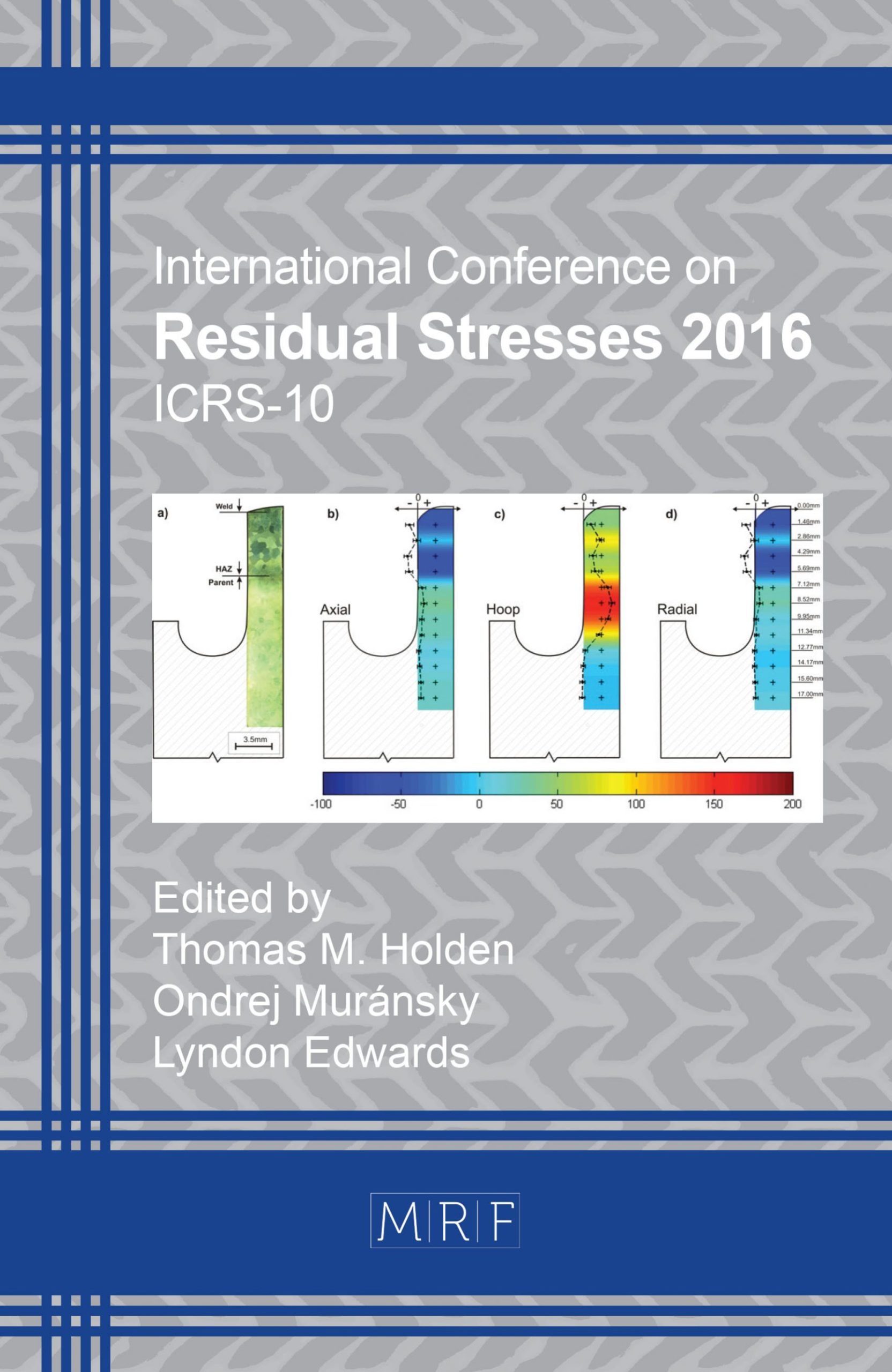Measurement of Highly Non-uniform Residual Stress Fields in Thin Plate Using a New Side Cut Destructive Method
H.K. Kim, M.J. Pavier, A. Shterenlikht
download PDFAbstract. A recently proposed Mechanical Strain Relaxation (MSR) technique for the measurement of residual stress in thin plates is presented. The measurement of residual stress involves making a single straight cut and collecting the relaxation displacement data from the side surface. In this work the method was applied to an Aluminium friction stir welded (FSW) specimen. The cut was introduced with a wire electrical discharge machining. The displacements were recorded with a 3D digital image correlation (DIC) method. The measured FSW residual stress profile agreed well with that measured by Energy Dispersive X-ray Diffraction (EDXRD). It was observed that the amount of plastic strain, caused by stress redistribution during the relaxation process, strongly depends on the direction of the propagation of the cut. In particular, if a cut is propagated along the thickness of a plate, then the effect of plastic flow on the measured residual stress is negligible. Another attractive feature of the method is that it is relatively insensitive to random experimental noise.
Keywords
Non-uniform Residual Stress, Mechanical Strain Relaxation Technique, Digital Image Correlation, Thin Friction Stir Welding Plate, Plasticity Effect
Published online 12/22/2016, 6 pages
Copyright © 2016 by the author(s)
Published under license by Materials Research Forum LLC., Millersville PA, USA
Citation: H.K. Kima, M.J. Pavierb, A. Shterenlikhtc, ‘Measurement of Highly Non-uniform Residual Stress Fields in Thin Plate Using a New Side Cut Destructive Method’, Materials Research Proceedings, Vol. 2, pp 115-120, 2017
DOI: http://dx.doi.org/10.21741/9781945291173-20
The article was published as article 20 of the book Residual Stresses 2016
![]() Content from this work may be used under the terms of the Creative Commons Attribution 3.0 licence. Any further distribution of this work must maintain attribution to the author(s) and the title of the work, journal citation and DOI.
Content from this work may be used under the terms of the Creative Commons Attribution 3.0 licence. Any further distribution of this work must maintain attribution to the author(s) and the title of the work, journal citation and DOI.
References
[1] G. S. Schajer, Measurement of non-uniform residual stresses using the hole-drilling method, Part I – Stress Calculation Procedures, J. Eng. Mater-T ASME, 110(4):338–343, 1988. http://dx.doi.org/10.1115/1.3226059
[2] W. Cheng and I. Finnie, Residual Stress Measurement and the Slitting Method, Springer, New York, 2007.
[3] M. B. Prime, Cross-sectional mapping of residual stresses by measuring the surface contour after a cut, J. Eng. Mater-T ASME, 123:162–168, 2001. http://dx.doi.org/10.1115/1.1345526
[4] H. K. Kim, H. E. Coules, M. J. Pavier, and A. Shterenlikht. Measurement of highly non-uniform residual stress fields with reduced plastic error, Exp. Mech., 55:1211–1224, 2015. http://dx.doi.org/10.1007/s11340-015-0025-1
[5] W. Xu, J. Liu, and H. Zhu, Analysis of residual stresses in thick aluminum friction stir welded butt joints. Material Design, 32(4):2000–2005, April 2011. http://dx.doi.org/10.1016/j.matdes.2010.11.062
[6] S. Timoshenko and J. N. Goodier, Theory of Elasticity, McGraw-Hill, 3rd edition, 1970.
[7] G Horne, M. J. Peel, and D. J. Smith. Measurement of elastic follow-up for combined applied and residual stresses. In Proceedings of the ASME Pressure Vessels and Piping, PVP2013, 14-18 July 2013. http://dx.doi.org/10.1115/pvp2013-97624
[8] Dantec Dynamics, ISTRA 4D Software Manual Q-400 system, 2012.
[9] B. Pan, H. Xie, B. Xu, and F. Dai. Performance of sub-pixel registration algorithms in digital image correlation, Measurement Science and Technology, 17(6):1615–1621, June 2006. http://dx.doi.org/10.1088/0957-0233/17/6/045
[10] P. Reu. Hidden Components of DIC: Calibration and Shape Function – Part 1. Exp. Techniques, 36(2):3–5, March 2012. http://dx.doi.org/10.1111/j.1747-1567.2012.00821.x































